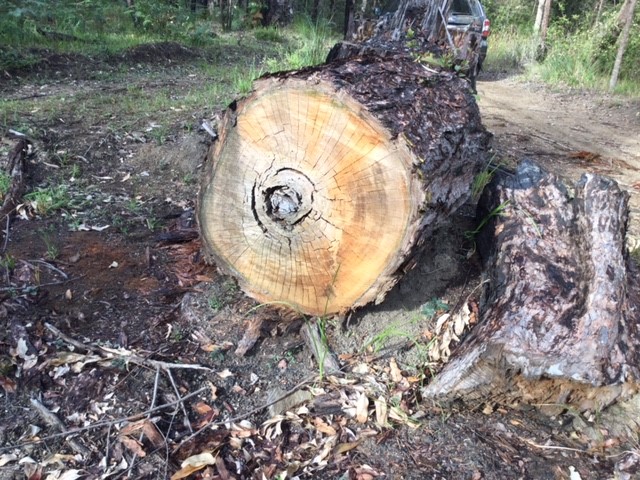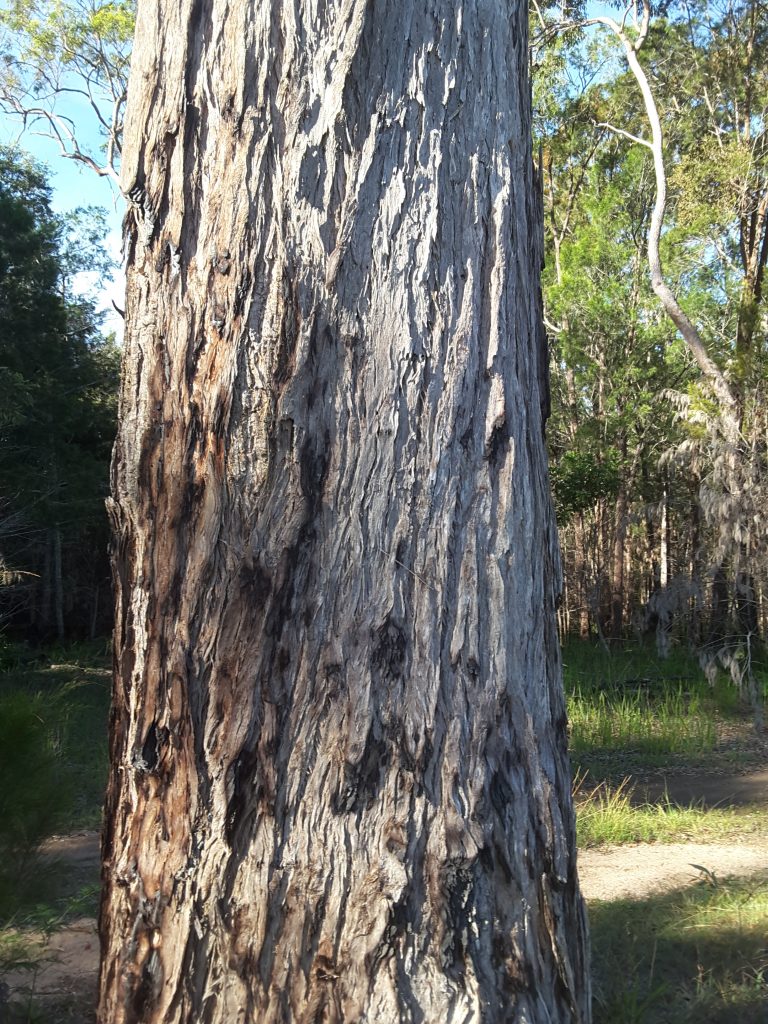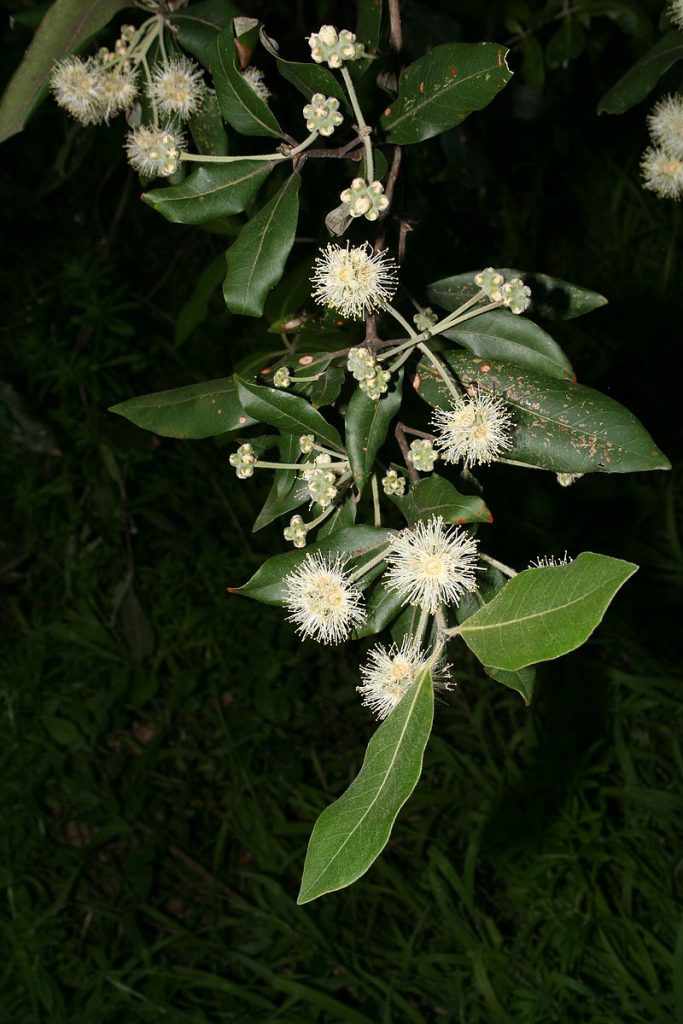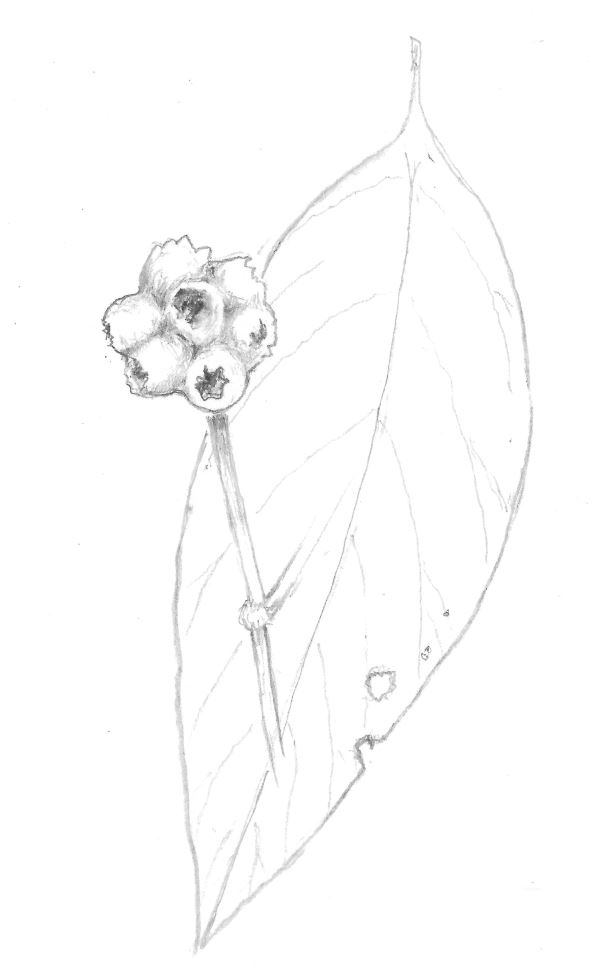The species name “glomulifer” refers to the flowers and derives from glomulus (little ball) and -fer (bearing). Turpentines can refer to any member of the genus Syncarpia, which is a member of the Myrtaceae family
There are three Syncarpia species all of which are endemic to Australia. S. glomulifera is the most widespread as is simply referred to as Turpentine, while the other two, S. hillii (Satinay or Fraser Island Turpentine, and S. verecunda (Red Turpentine) have more limited distributions. The habitat most commonly associated with Turpentine is a transitional forest between rainforest and wet sclerophyll forest and woodland, in altitudes between 40 to 1100 metres. It is found from the Big Table-land near Cooktown to southern NSW. It grows as an emergent tree among other popular timber trees such as grey ironbark, tallow-wood, brush box, grey gum, red ironbark, mountain mahogany, spotted gum and various rainforest trees. Here, Turpentine can be seen in the vicinity of the rose gum forest west of Paluma.
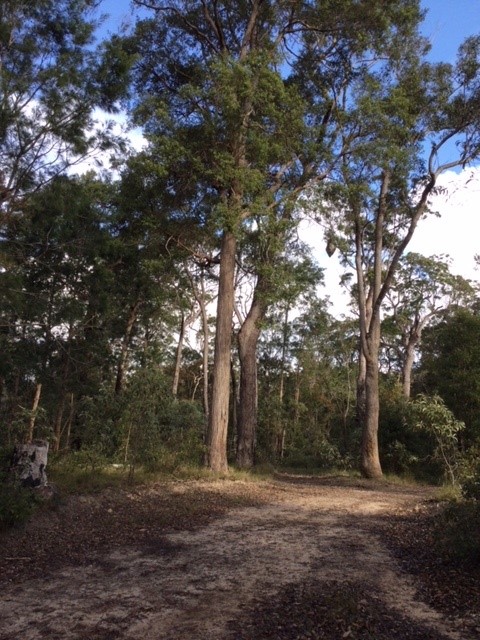
Tall and straight trunked, Turpentine is a vigorous grower and can reach a height of 25 to 60 metres in tropical areas. The trunk can attain a diameter of 1.5 metres. Its bark is coarse, fibrous and deeply furrowed; new twigs are hairy. It is also a long-lived tree and some specimens are said to have reached 300 years.
The elliptic leaves are simple, opposite or whorled. 30 – 110 x 14 – 45 mm in size. The upper side is glabrous or minutely hairy while the under-surface is covered in white hair, with brownish oil dots visible with a lens. The leaves are mid green, red when young, with wavy margins. They are aromatic when crushed and this aroma reminded early settlers of turpentine, hence the common name.
| Syncarpia glomifera flowers photo by Casliber CC by SA 3.0 | Syncarpia seed capsule (about the size of a marble) |
Flowering occurs from August to February. The fragrant flowers are clustered in axillary or terminal heads. The flower has four or five white or cream petals and fine filamentous white or cream stamens, similar in appearance to many Australian native flowers. They are very popular with pollinators like European honey bees, native bees, grey flying fox, little red flying fox and birds such as lorikeets.
Fruiting occurs between November and July. The grey or brown fruit is an aggregate capsule 10 – 12 mm long and 12 – 22 mm wide. There are usually seven valves containing numerous orange/brown seeds about 2 mm long.
Turpentine was much sought after as a hardwood with its reddish-brown colour ranging to a deep chocolate brown and its coarse even texture with a straight grain. It is an excellent timber for dance floors. It is also used in the construction of plywood, laminated beams, bench tops, joinery and parquetry, boat building and wine casks. Because the timber is fire resistant and highly resistant to termites, marine invertebrates and borers, it was much in demand for piers and building foundations. During the War years, Archie Taylor cut two turpentine logs over 100 ft long (one was 128 ft) for an American Radar station. It took several days to get the logs down the Range to Moongoobulla.
The area around Paluma was heavily logged, especially during the War-time years. So much so, that there are not even any relict trees known on the H Track or surrounding area. There are however, several fine living specimens in the vicinity of Hussey Road and around the Blackfriars district. Around Taravale there are many young trees.
Although the IUCN Red List status of this species is the lowest category (Least Concern), in NSW, the Turpentine-Ironbark forest of the Sydney Basin Bioregion is now listed as endangered or critically endangered in the Threatened Special Species Conservation Act, NSW, 1995 as are all the communities with which the Turpentine-Ironbark forest vegetation intergrades. The Commonwealth also lists the Community as critically endangered under the Environmental Protection and Biodiversity Conservation Act, (Commonwealth) 1999. The fate of these trees is an example of how easily and quickly human activity can change an environment and the habitats of many insects, birds and animals.
Turpentine trees have been introduced into Hawaii, Africa, New Zealand, and the Cook Islands and the species is considered an invasive weed in most of these areas.
For detailed information on the timber industry around Paluma, I recommend Linda Venn’s book ‘Paluma: the First Eighty Years 1870’s to 1950’s.’
Next time you drive out to the rose gum forest, see if you can identify the turpentine among the gums, stringy barks she-oaks and other trees.
Text and photos (unless indicated) by Colwyn Campbell

